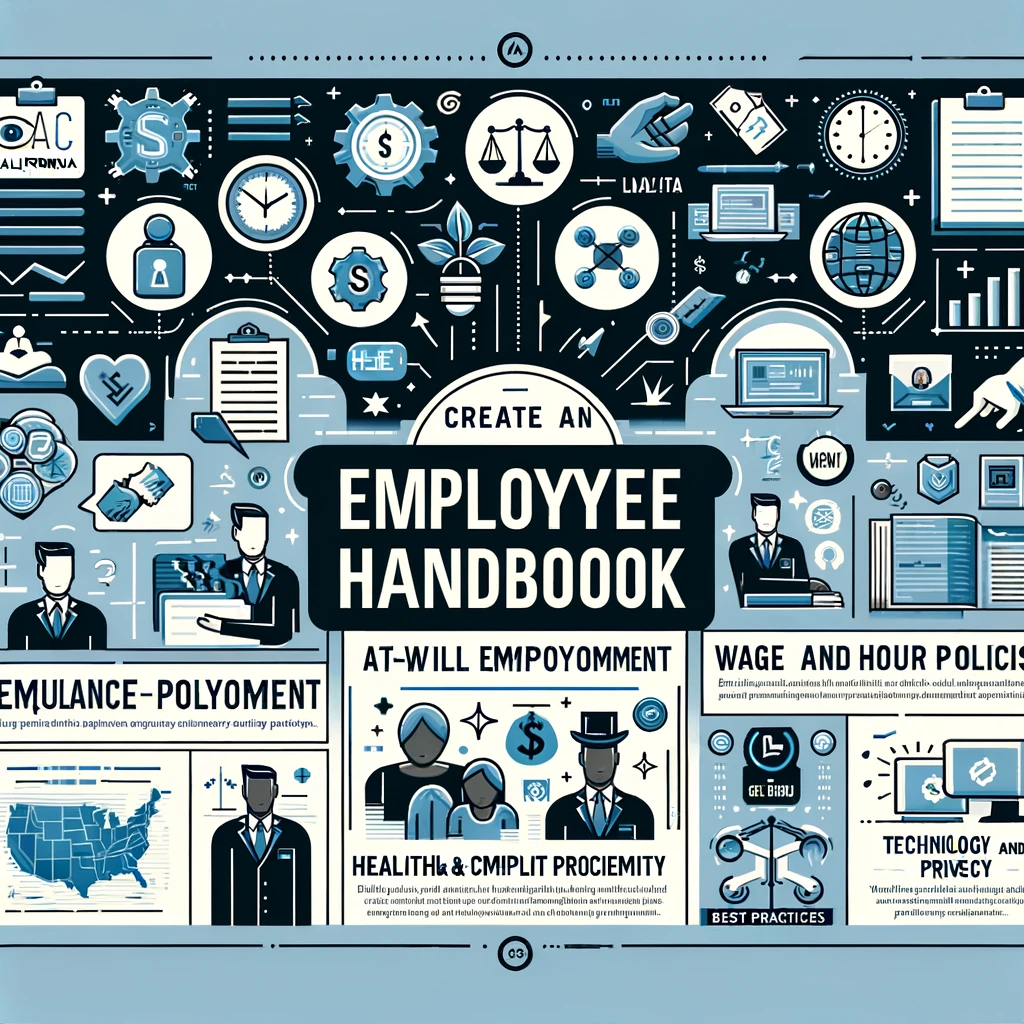Crafting the Ultimate Employee Handbook for California Businesses: A Comprehensive Guide
In the ever-evolving landscape of California's employment law, creating an effective and compliant employee handbook is both a necessity and a challenge for businesses. This comprehensive guide aims to navigate employers through the intricacies of assembling an employee handbook that not only meets legal requirements but also fosters a positive workplace culture. With a focus on clarity, compliance, and communication, we'll delve into the essential components of an employee handbook tailored for the Golden State.

Understanding the Importance of an Employee Handbook in California
An employee handbook serves as the backbone of workplace policies, outlining the rights and responsibilities of both employers and employees. In California, where employment laws are particularly stringent and dynamic, a well-crafted handbook is crucial for:
Legal Compliance: Ensuring adherence to state-specific labor laws and regulations.
Dispute Prevention: Clarifying company policies to reduce misunderstandings and potential legal disputes.
Culture and Values: Communicating the organization's mission, values, and culture to align and motivate the workforce.
Key Components of a California Employee Handbook
1. At-Will Employment Statement
California is an at-will employment state, meaning either the employer or the employee can terminate employment at any time, with or without cause. A clear at-will employment statement is essential, but it must be carefully crafted to avoid undermining the enforceability of other handbook policies.
2. Equal Employment Opportunity Statement
Reflecting California's commitment to workplace diversity and inclusion, this section should outline the company's policies against discrimination and harassment, in alignment with both federal and state laws, such as the Fair Employment and Housing Act (FEHA).
3. Leave Policies
California offers numerous state-specific leaves of absence that employers need to incorporate into their handbooks, including family and medical leave, pregnancy disability leave, and paid sick leave, among others. Details can be found on the California Department of Industrial Relations website.
4. Wage and Hour Policies
This section should address California's specific regulations on minimum wage, overtime, meal and rest breaks, and timekeeping practices, adhering to the standards set by the California Labor Commissioner's Office.
5. Health and Safety Policies
Incorporate policies that comply with the California Occupational Safety and Health Act (Cal/OSHA), including workplace safety procedures, injury and illness prevention programs, and emergency response plans.
6. Disciplinary Action and Complaint Procedures
Outline the steps for addressing employee misconduct and the process for employees to report grievances or policy violations, ensuring procedures are fair and transparent.
7. Technology and Privacy Policies
With the increasing use of technology in the workplace, include policies on email, internet use, social media, and privacy expectations, while considering California's privacy laws.
Best Practices for Developing Your Employee Handbook
Consult Legal Experts: Given the complexity of California employment law, consulting with legal professionals specializing in labor law is critical to ensure your handbook is compliant.
Regular Updates: Employment laws in California change frequently. Regularly review and update your handbook to reflect the latest legal requirements and organizational changes.
Clear and Accessible Language: Use straightforward, jargon-free language to ensure all employees can understand the policies.
Acknowledgment of Receipt: Include an acknowledgment page where employees confirm they have received, read, and understood the handbook.

Create & Review Your Contracts 10x Quality and Ease
Lawyer-level AI handles all your contract needs, with real lawyers providing safeguarding support

Conclusion
An employee handbook is more than just a compliance tool; it's an opportunity to communicate your company's values, set clear expectations, and build a foundation for a positive and productive workplace. By focusing on legal compliance, clarity, and company culture, California employers can create an employee handbook that not only minimizes legal risks but also enhances employee engagement and retention.
For additional resources and guidance on California employment law, consider exploring educational content provided by the California Chamber of Commerce and SHRM.
Remember, while this guide serves as a starting point, the creation of an employee handbook tailored to your specific business needs and legal obligations should be undertaken with professional legal assistance.

